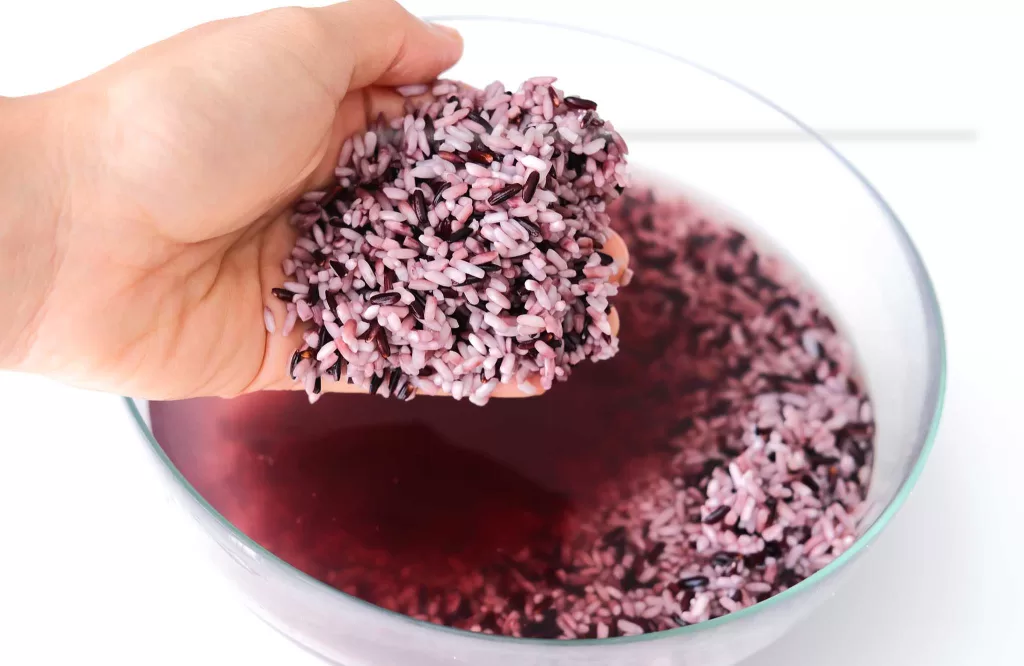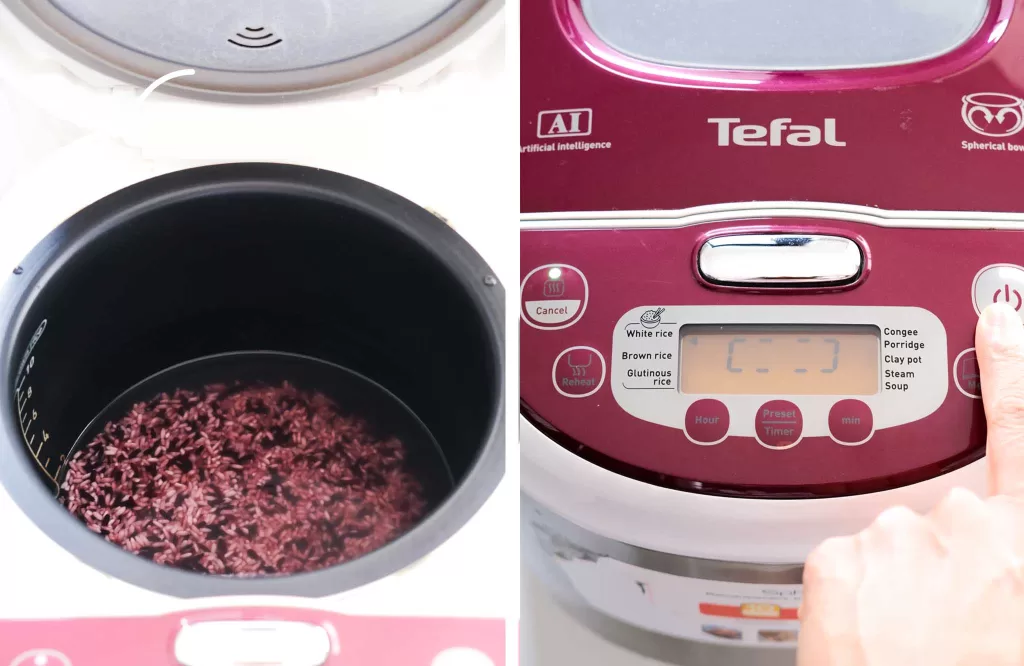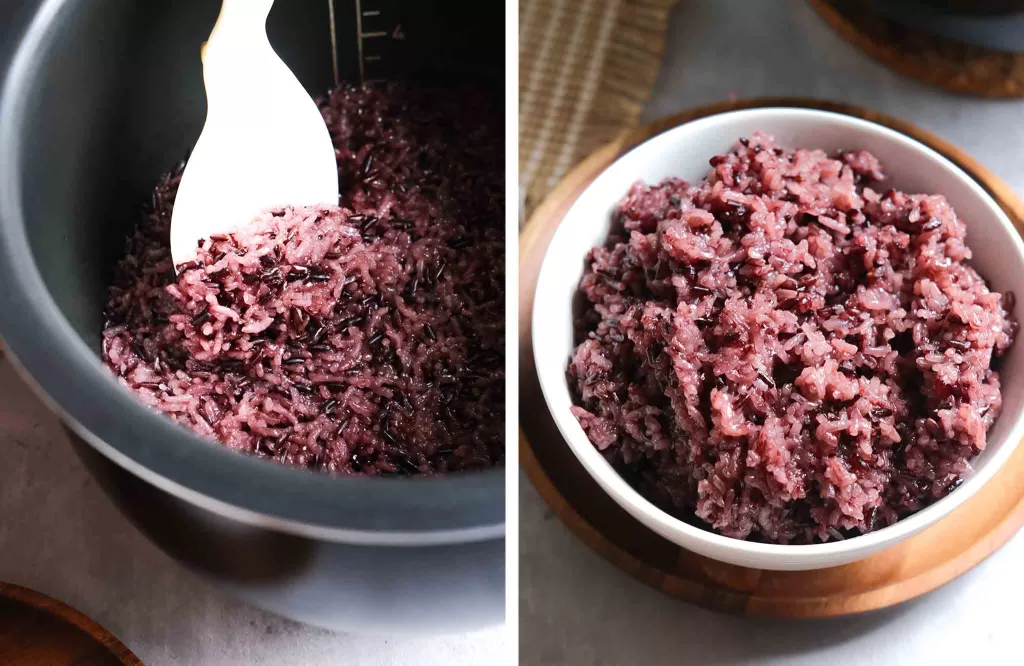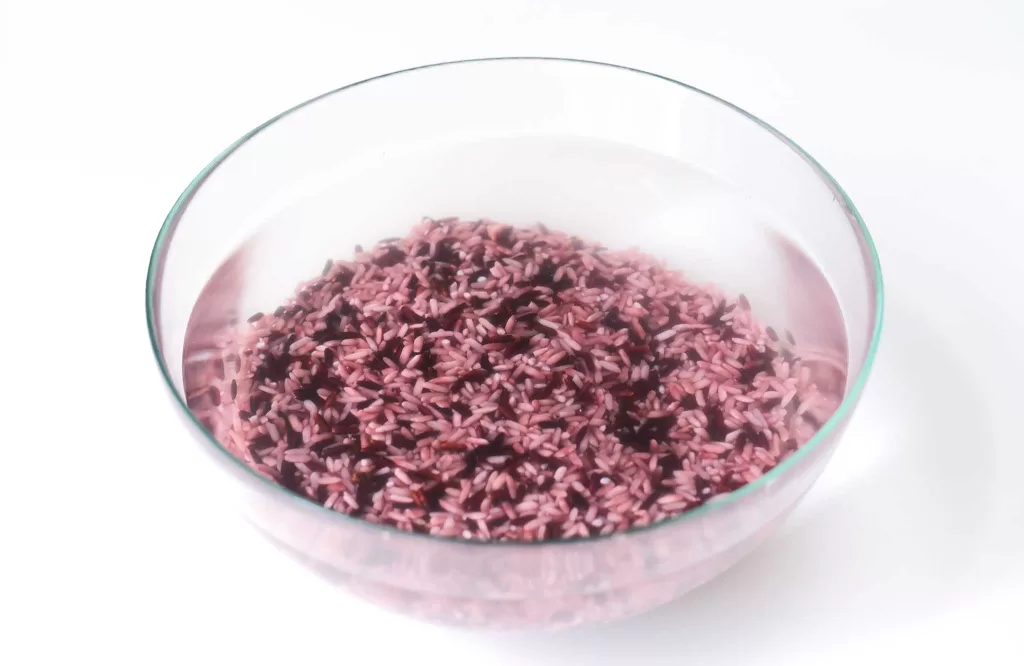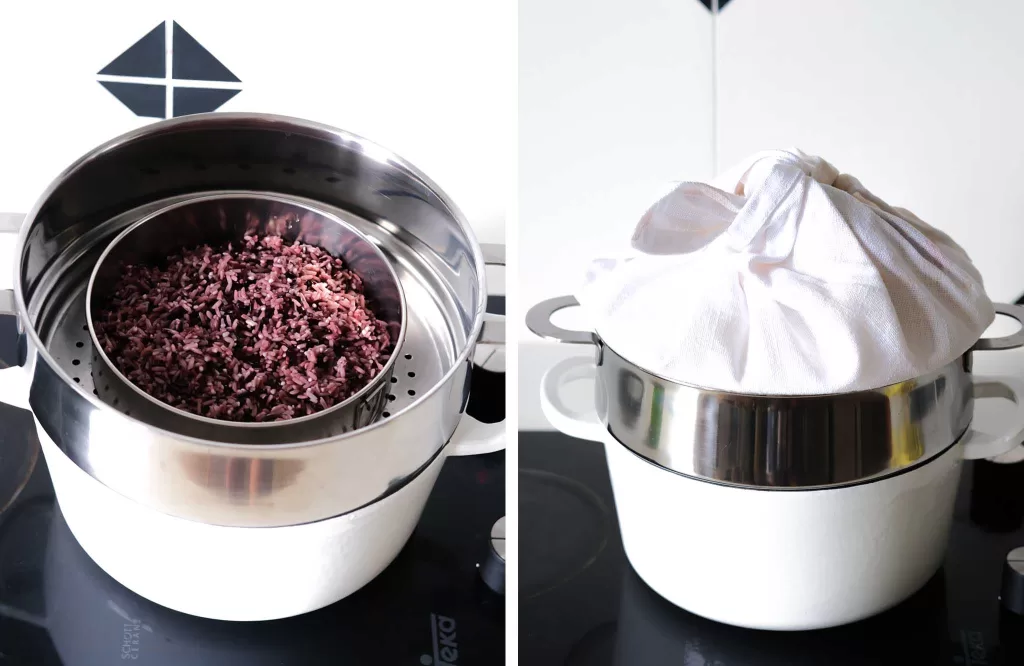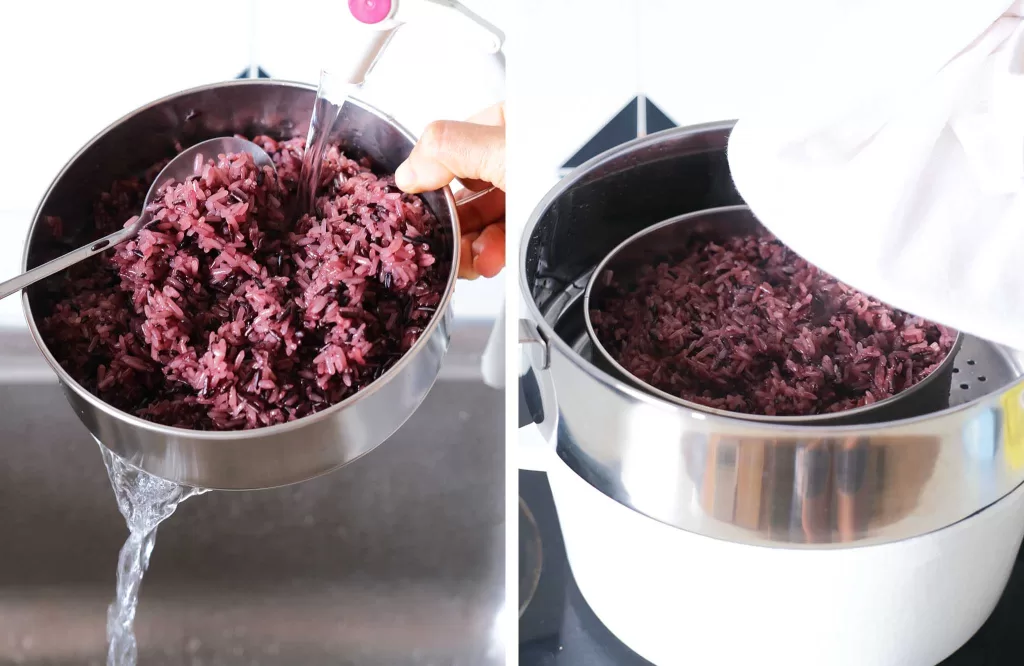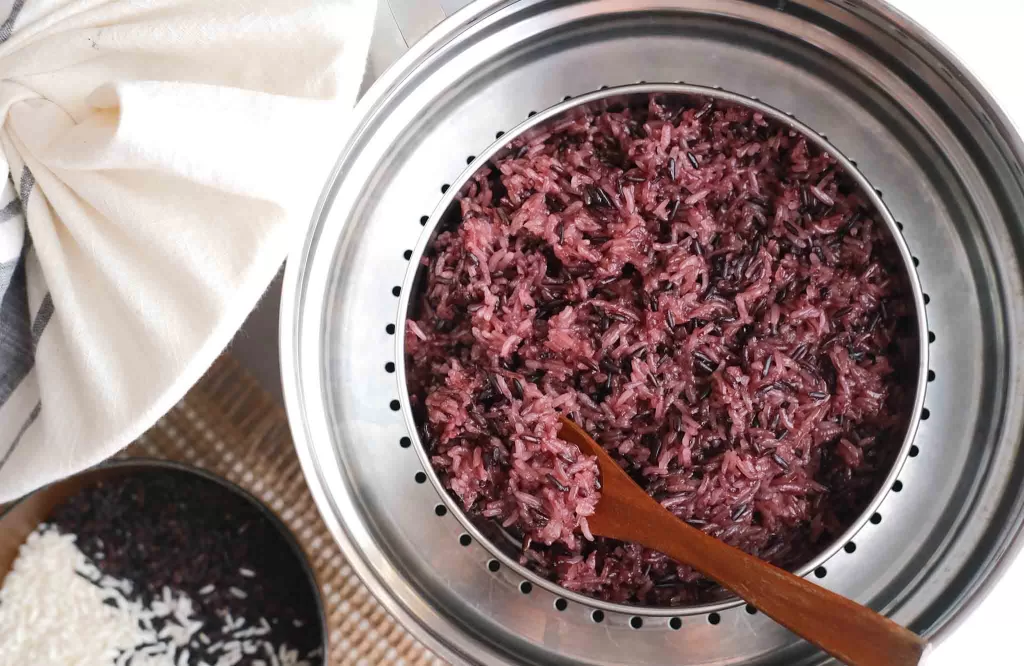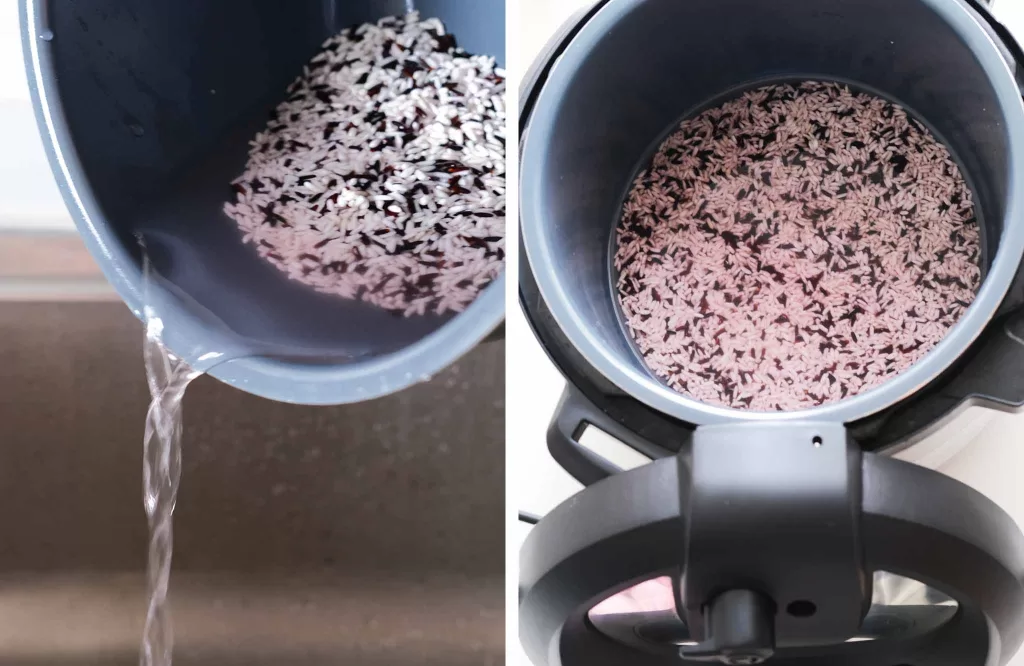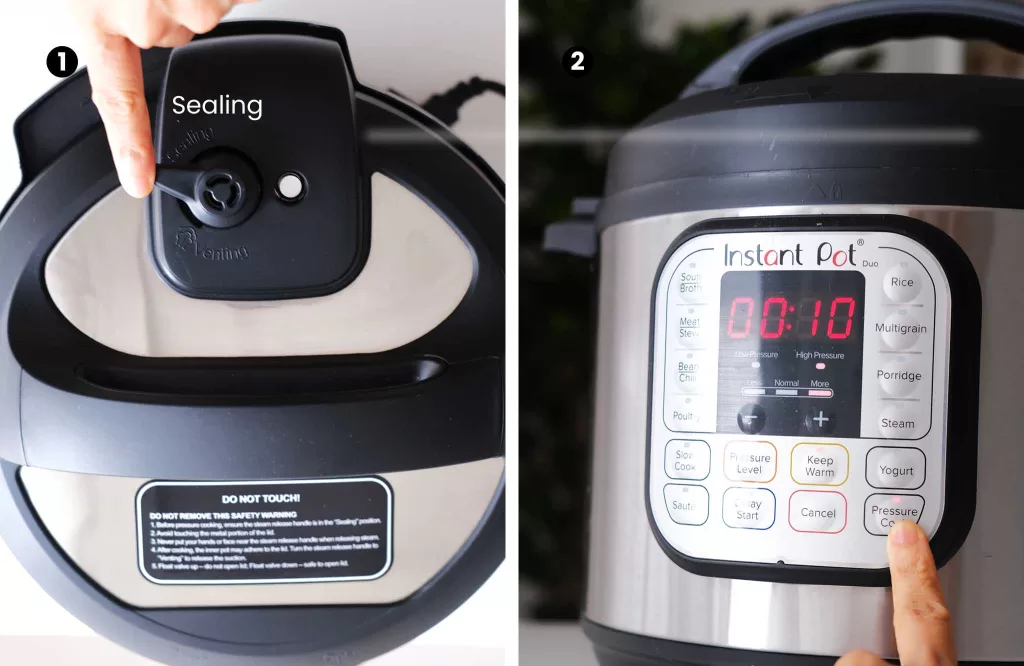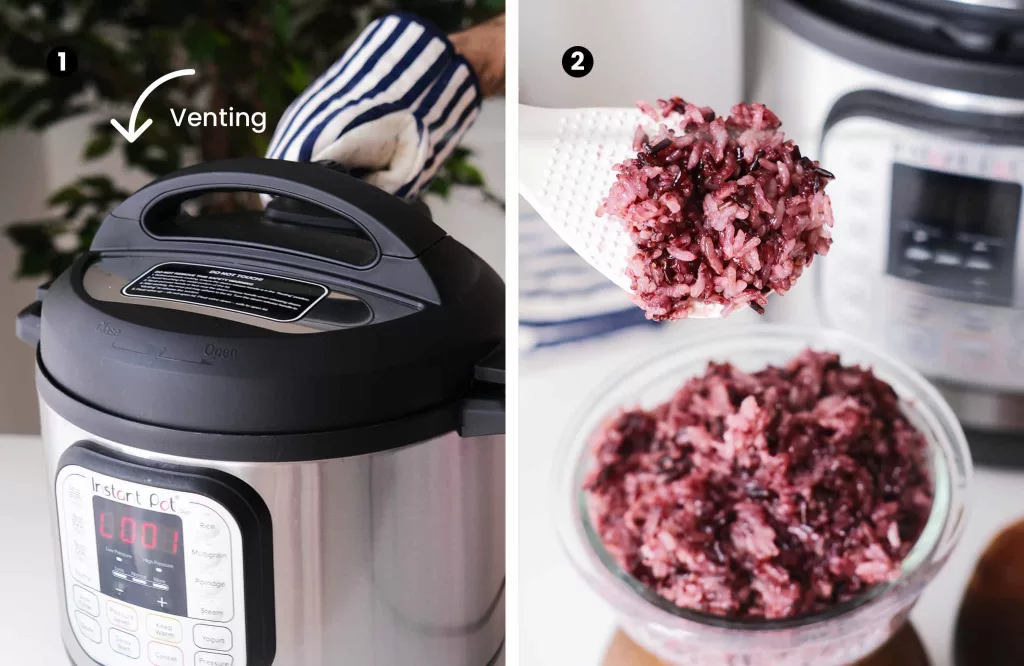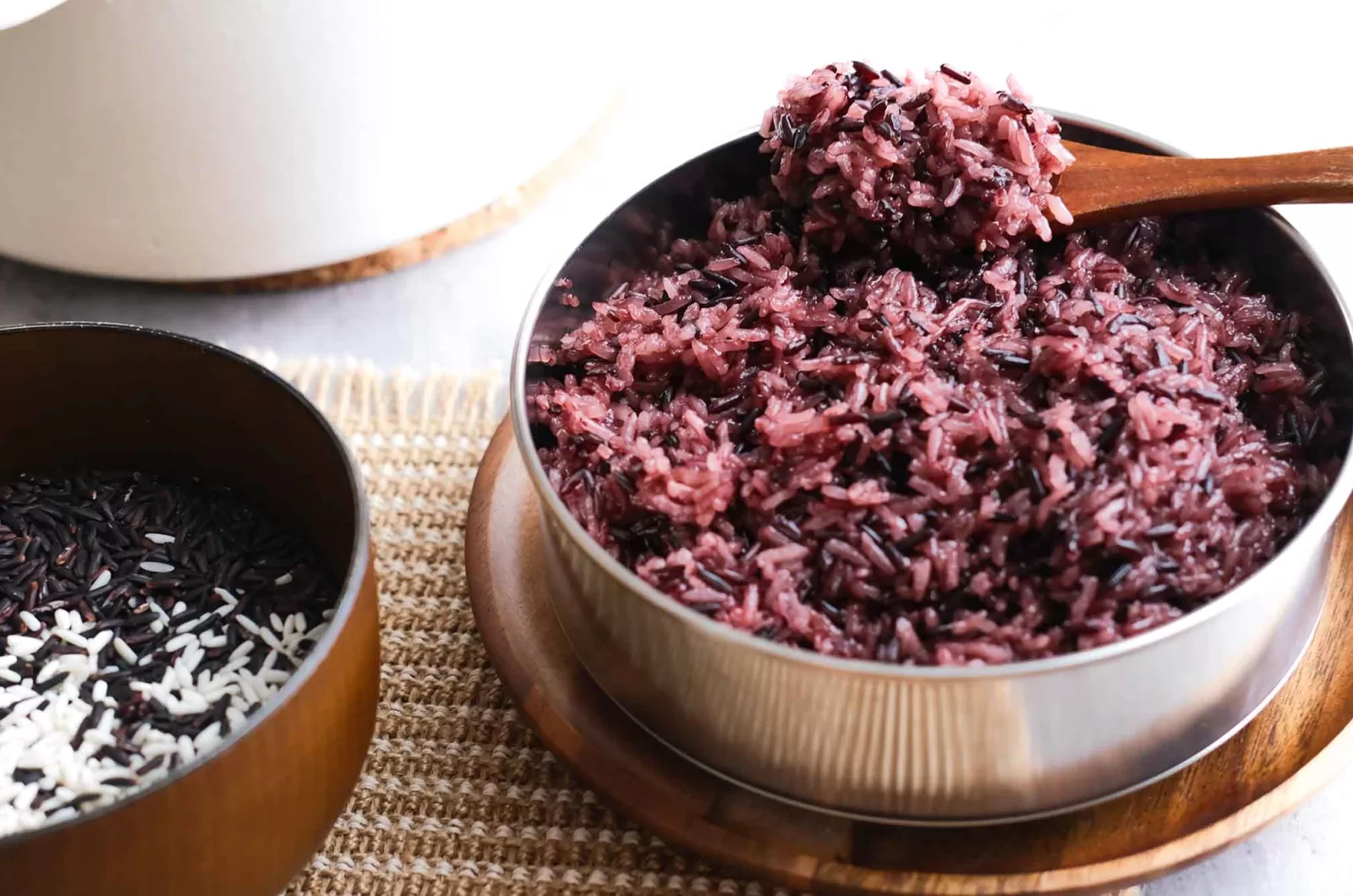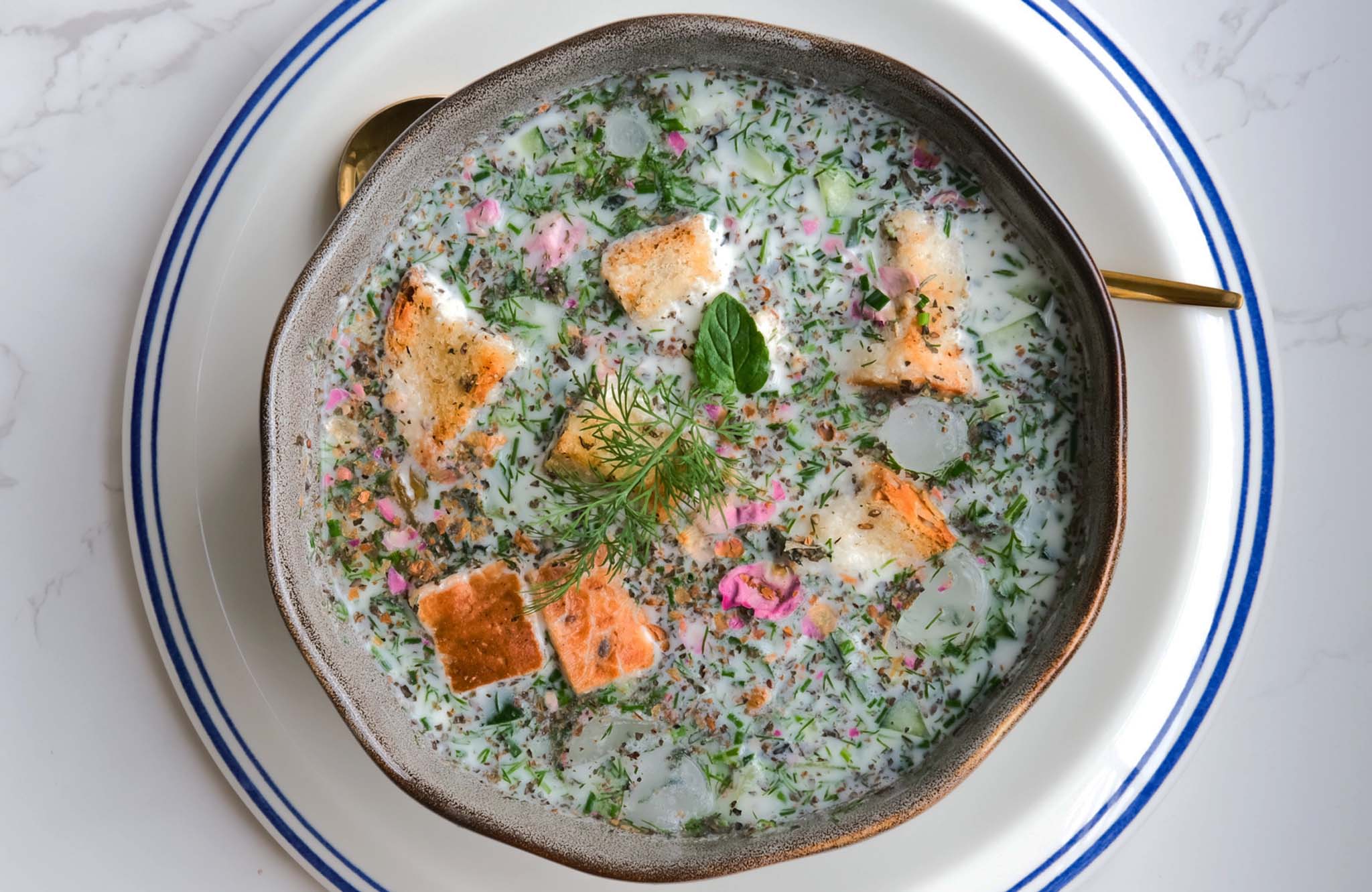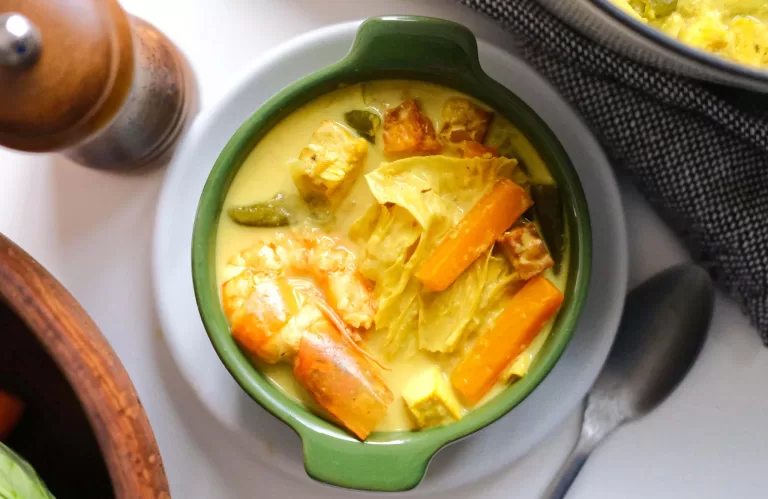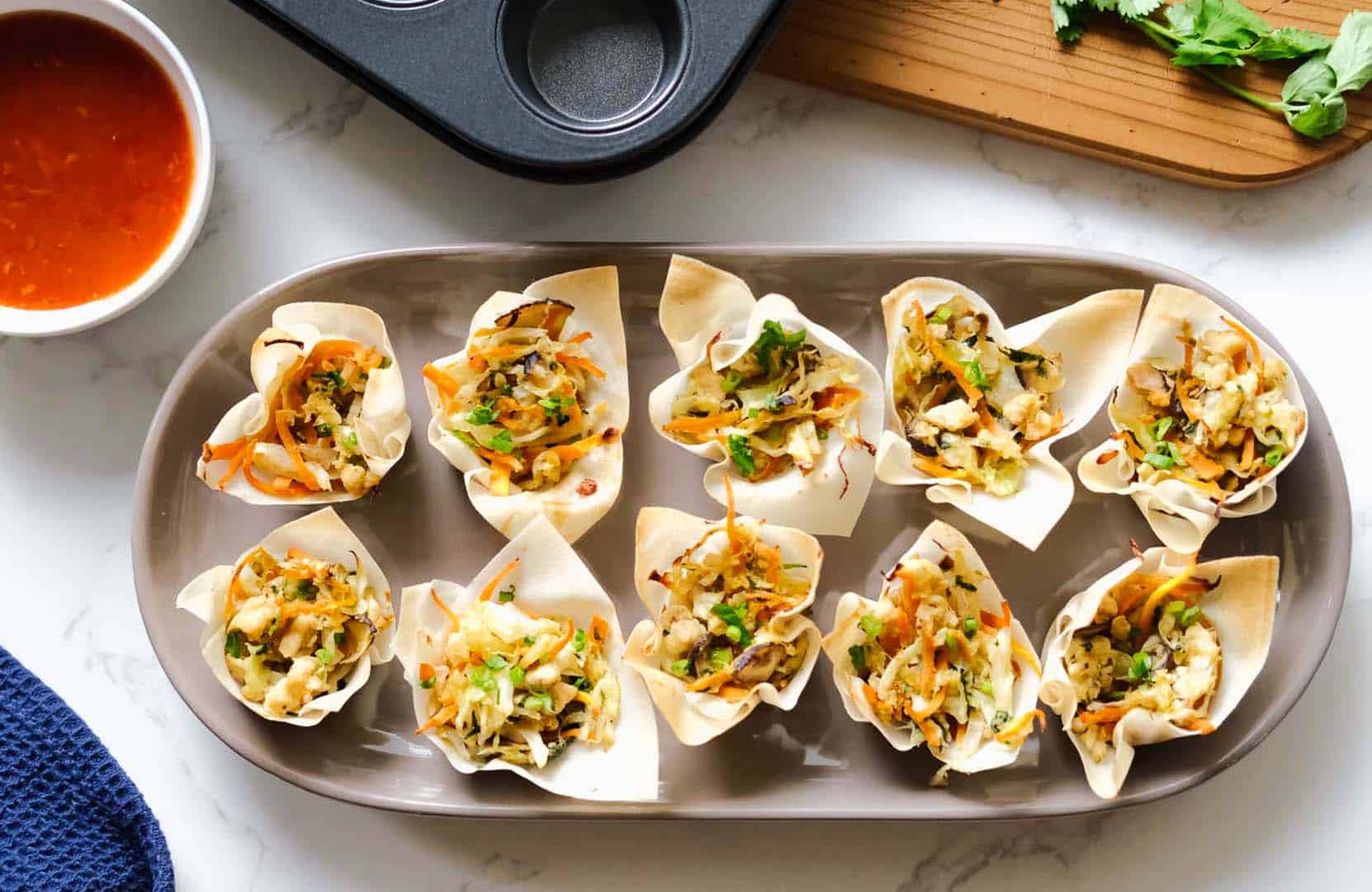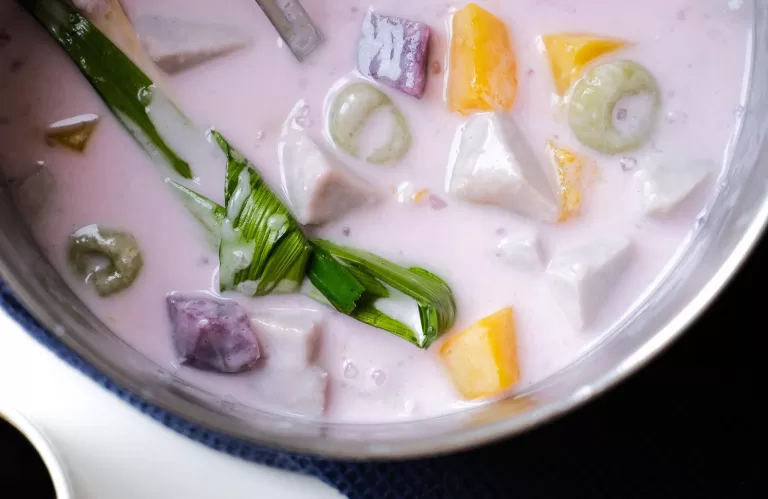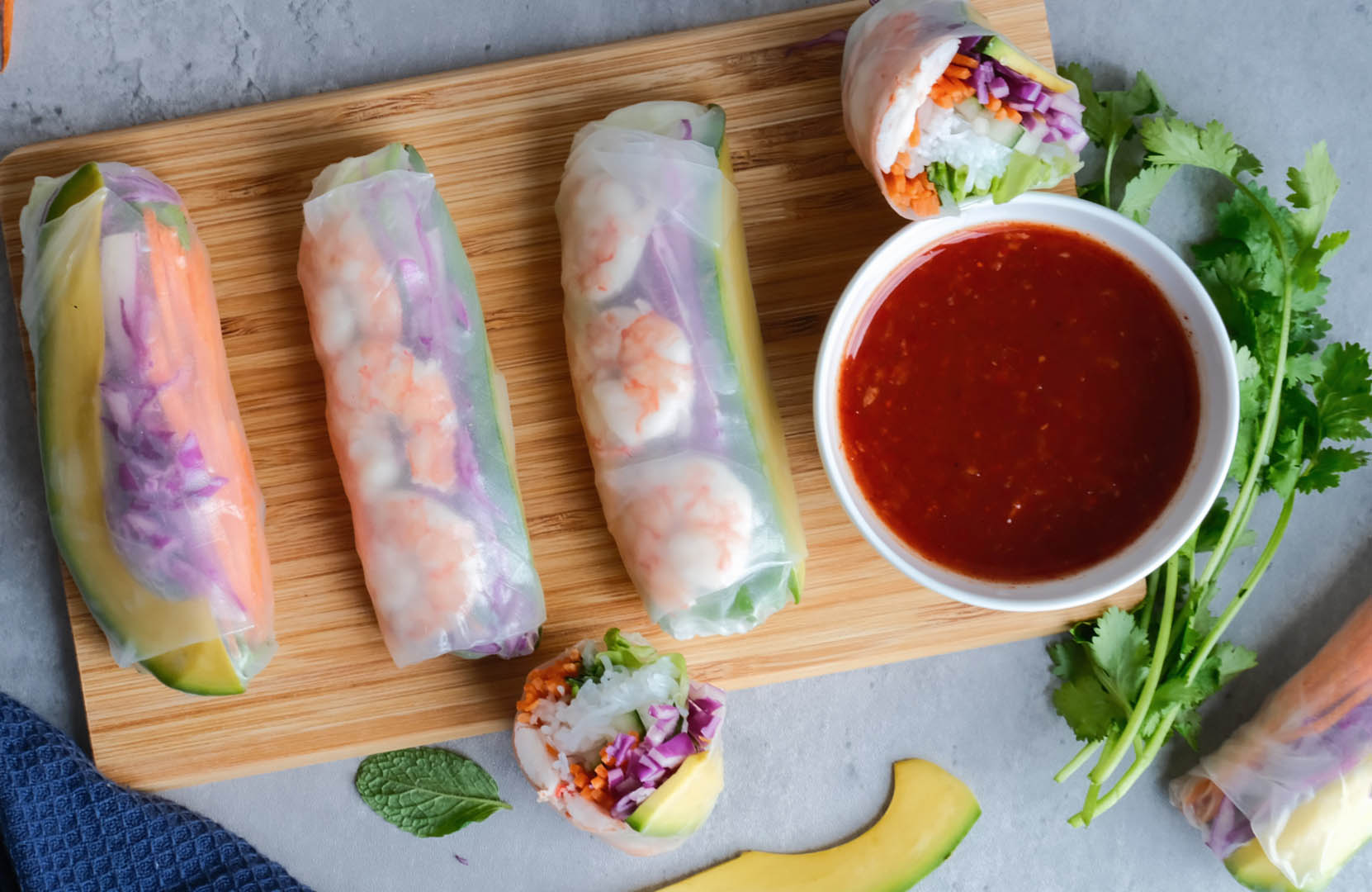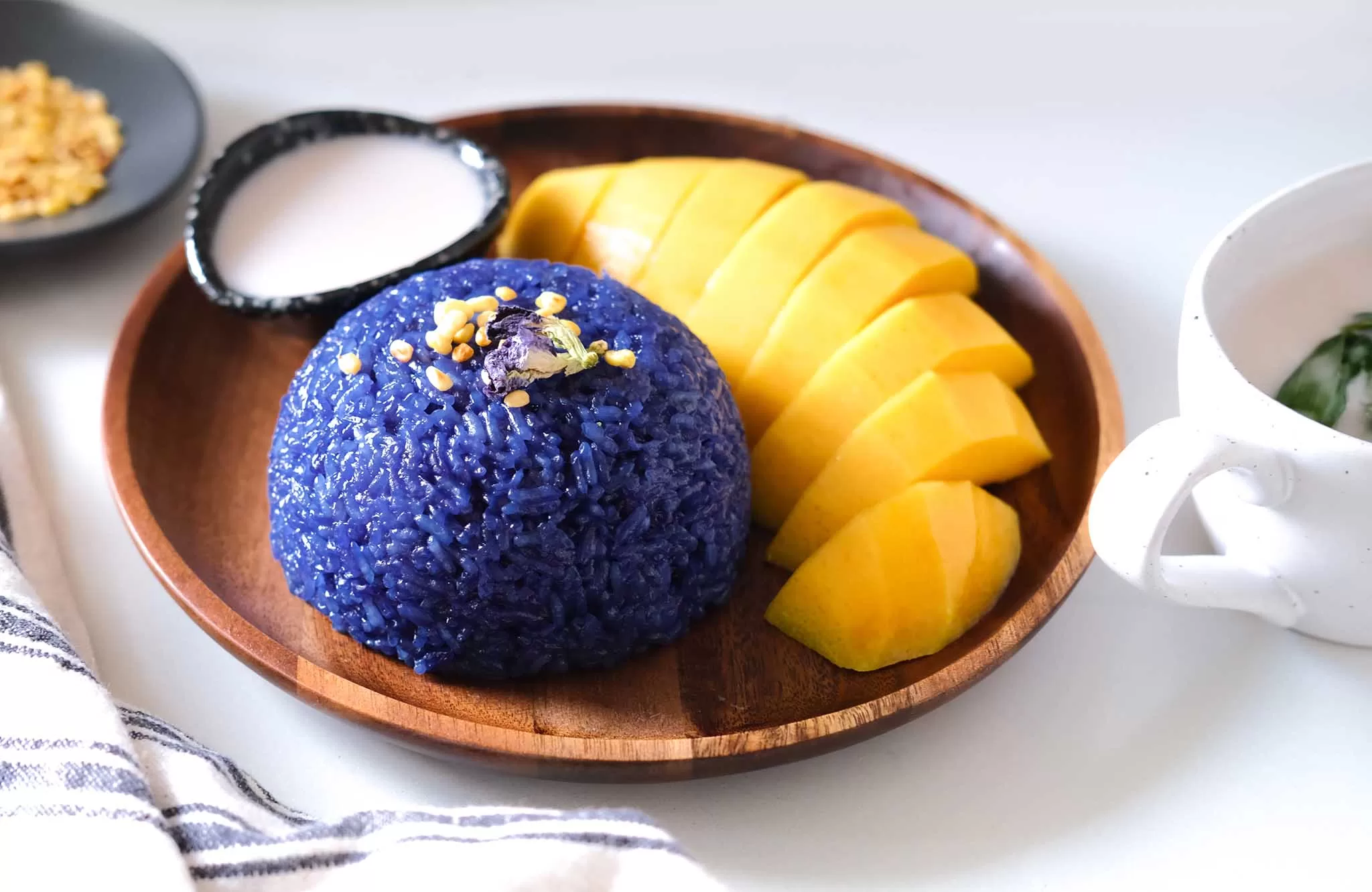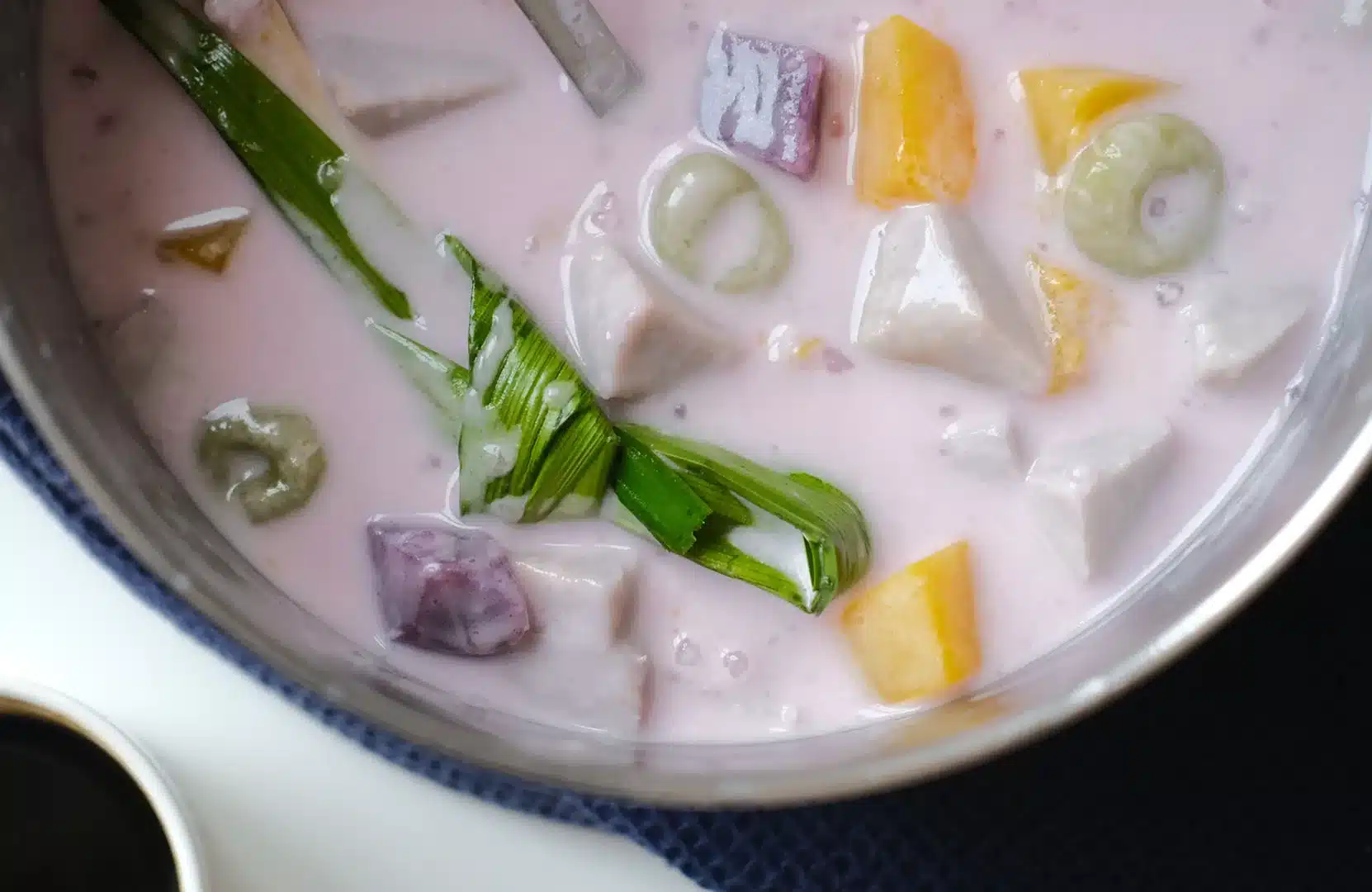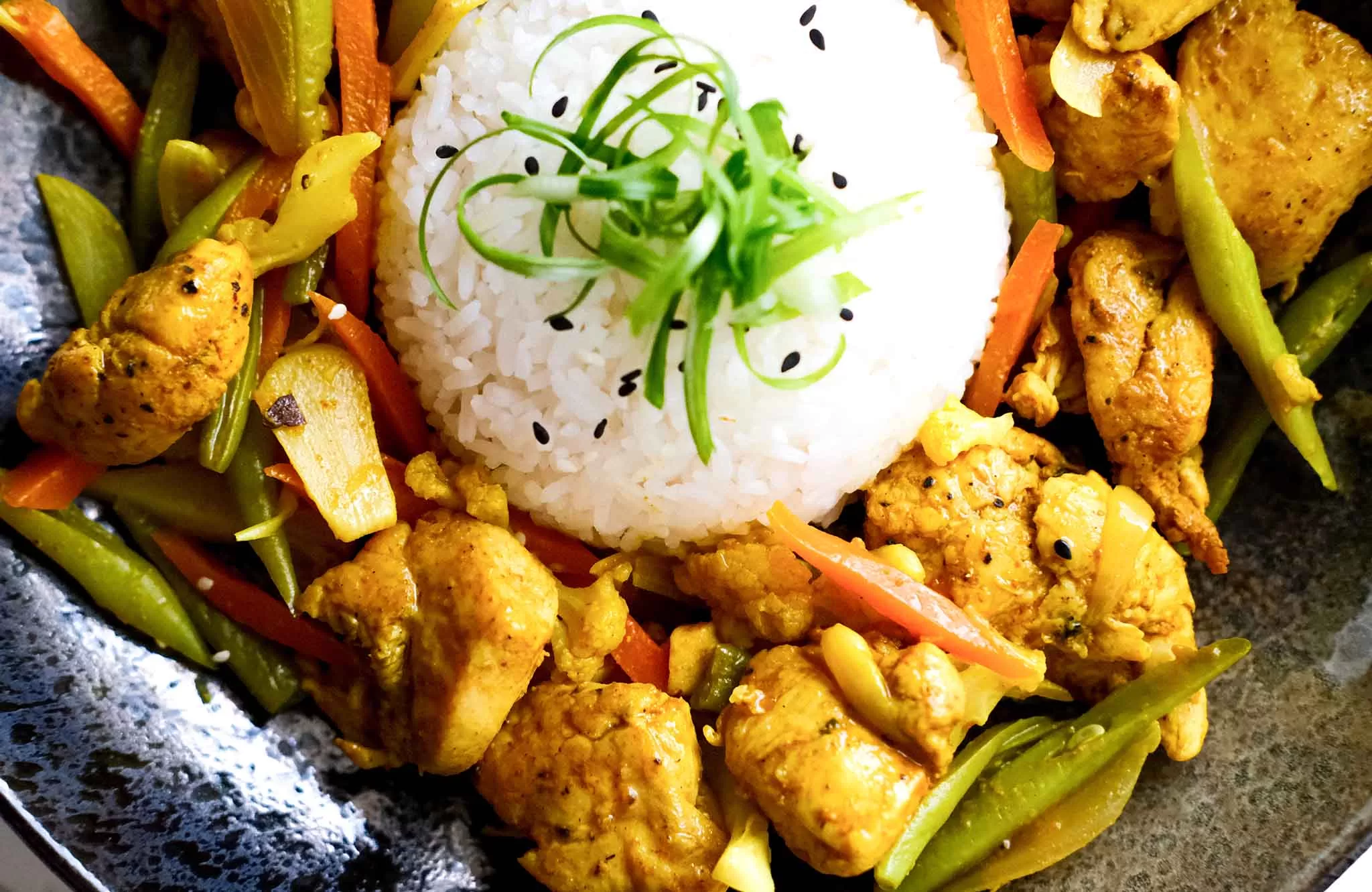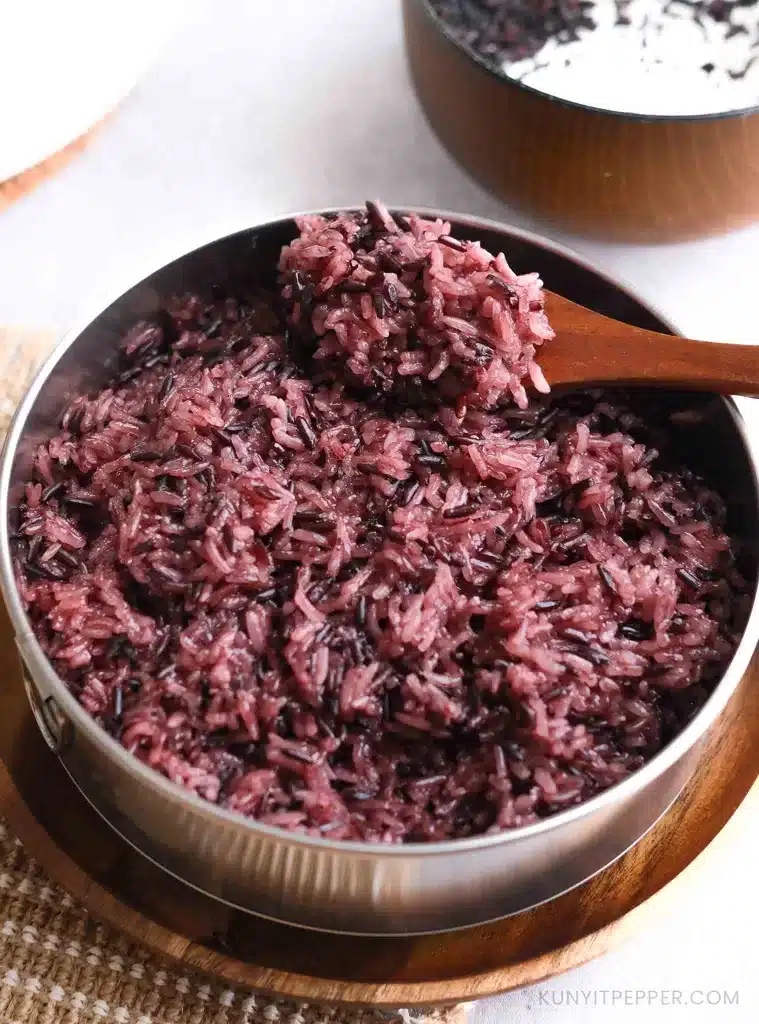
Purple sticky rice is my go-to substitute for white sticky rice whenever I make a dish with sticky rice. Growing up, I was never a fan of purple sticky rice or black rice, but as I started incorporating more whole grains into my recipe, I grew to love its nuttier taste.
The purple color in this purple glutinous rice contains a beneficial plant compound called Anthocyanin, which is also found in berries.
A diet rich in antioxidants is said to help prevent the risk of chronic disease, better brain function, and boost immunity (source).
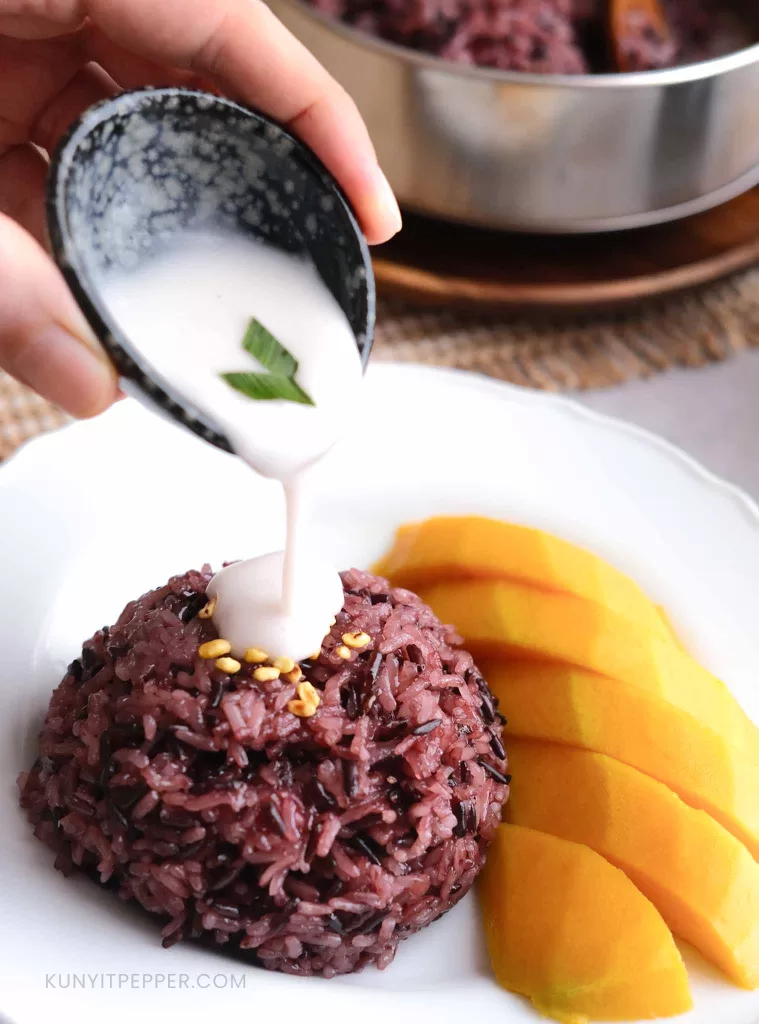
Table of Contents
- What is Purple Sticky Rice?
- Ratio in making purple rice
- 3 Methods of Cooking Purple Sticky Rice
- Method 1. Rice Cooker – The easiest way
- Method 2. Steamer – Traditional & make the best texture
- Method 3. Instant Pot (Pressure Cook) – Fastest way
- So which method to choose?
- What can you eat Purple Sticky Rice with?
- Other recipes using black rice
- FAQs
What is Purple Sticky Rice?
Purple sticky rice is made by combining white glutinous rice and black rice (also known as forbidden rice). During cooking or soaking, the natural purple dye from black rice seeps into white glutinous rice, turning it into a purple color.
Unlike regular white or brown rice, black rice is not a daily staple. Even here in Southeast Asia, it is much less common than white glutinous rice. I’m not sure if it’s due to its higher price, nuttier taste, or chewier texture, but black rice tends to be used more sparingly in recipes.
Adding black rice to sticky rice is a great way to add some dose of antioxidants to food, and it has been practiced since ancient times. This naturally sweet fermented purple rice recipe is one of the old traditional Southeast Asian recipes you might be interested in making from purple sticky rice.
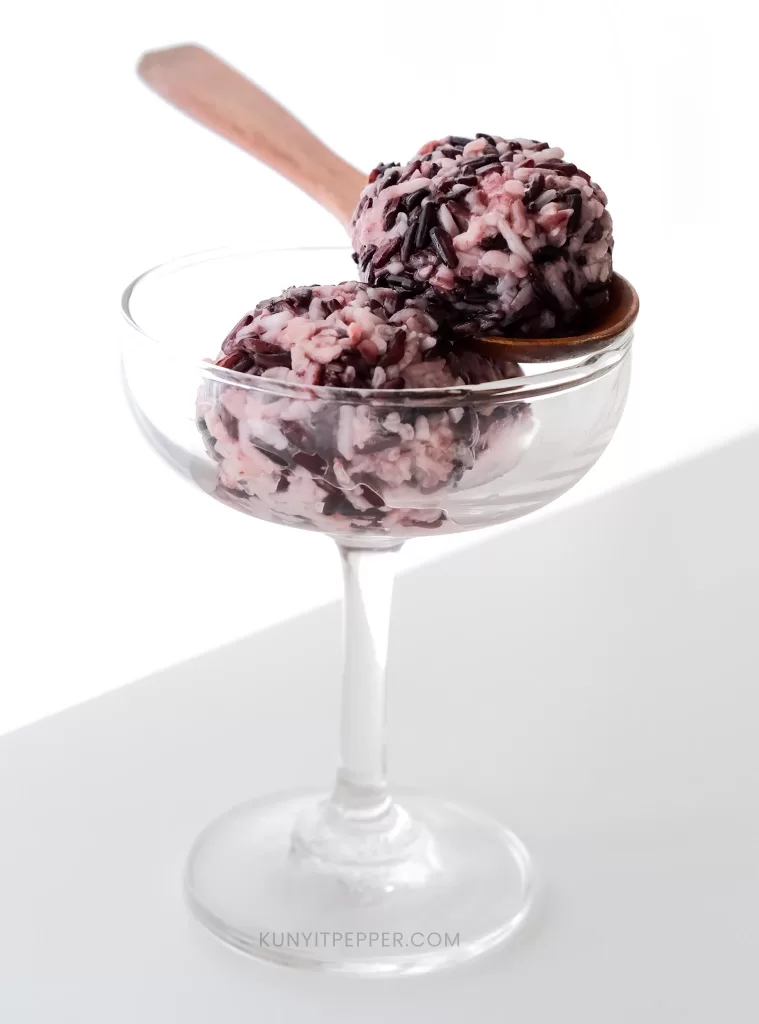
Ratio in making purple rice
I find that 1:1/4 of white glutinous rice and black rice is the perfect ratio to make a beautiful purple sticky rice. Feel free to adjust the amount of black rice to your liking.
But keep in mind that the amount of black rice will change the flavor, nutrients, and the purple hue of the purple sticky rice. Plus, the more you add the rice, the more water is needed because black rice requires a lot more water than white glutinous rice.
3 Methods of Cooking Purple Sticky Rice
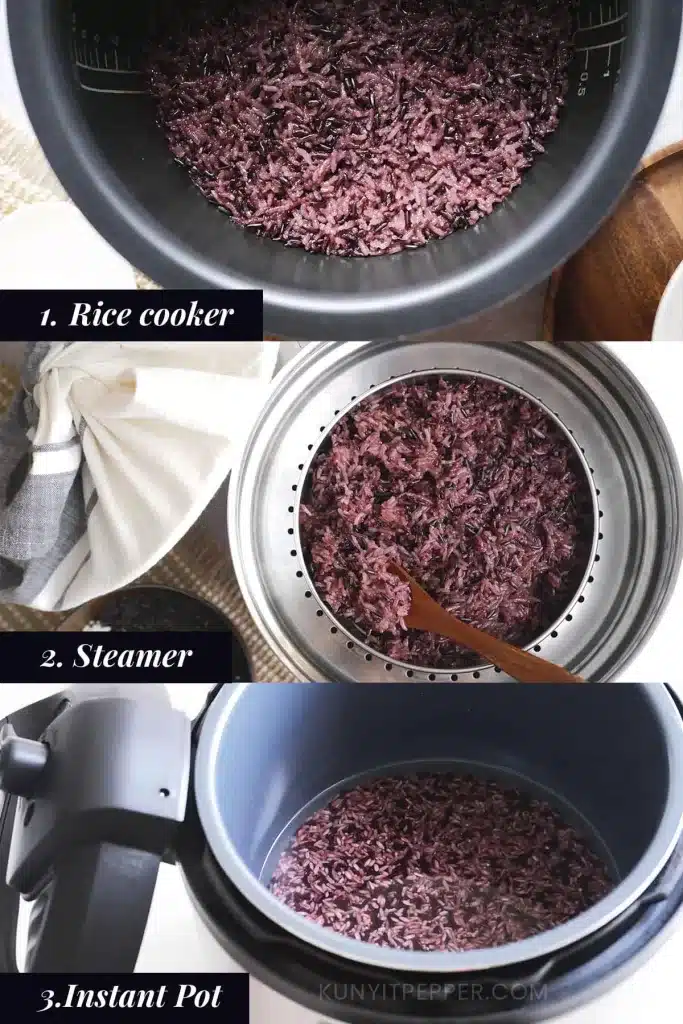
Method 1. Rice Cooker – The easiest way
✅ Go for this method if you need a fast cook and a ‘leave-it-to-cook’ way.
Total time: 30 minutes without soaking. + 4 hours if soaking
Tools needed: Rice Cooker
Ratio (Mixed Rice: Water) : 1:1.25 (If soaking) 1:1.5 (No soaking)
Recipe :
– 1 cup white glutinous rice
– 1/4 cup black rice
– 1 1/4 cup water (If soaking) or 1 1/2 cups (No soaking)
How to cook purple sticky rice in a rice cooker
- Wash the rice until the water runs clear. It usually takes 4-5 times. Soak the rice for at least 4 hours – Optional (I mentioned below why it is recommended to soak both rice).

- Drain the soaking water and replace it with clean water. Cook the rice in a rice cooker over a normal rice setting (or glutinous rice if you have one).

- Once cooked, transfer the rice to a dish or mesh bowl to stop the cooking in the pot. Leaving the rice on the rice cooker surface can lead to a dry crust, especially on the bottom.

Method 2. Steamer – Traditional & make the best texture
✅ Choose this method for the perfect and fluffy rice if time is not an issue. Great when serving it to guests.
Total time: 4 hours soaking + 50 minutes steaming (Soaking highly recommended)
Tools needed: Steamer Pot and steamer basket.
Ingredients:
– 1 cup white glutinous rice
– 1/4 cup black rice
– Enough water to fill the steamer pot
- Wash the rice until the water runs clear and soak the rice for at least 4 hours or leave it overnight – (Steam method needs soaking to absorb water)

- Drain the soaking water and transfer the rice to a steamer basket or strainer. Fill the pot with water and bring to a boil over high heat. Once the water starts boiling, place the rice basket into the steamer and leave it to steam for 30 minutes. If you use a stainless steel steamer, cover the lid with a clean cloth to avoid water dripping onto the rice.

- With a glove or clipper, bring out the steamer basket and rinse it over tap water to allow more liquid absorption. (Stir with a spoon while at it until all parts of the rice touch the water)

- Transfer back to the steamer and continue steaming for the second time for another 20 minutes on high heat. Once the timer is done, check if the rice is soft enough, then turn off the heat, and it’s ready to be enjoyed!

Method 3. Instant Pot (Pressure Cook) – Fastest way
✅ Go for this method if you have an Instant Pot and need a faster way & skip the soaking.
Total time: 15 minutes (No soaking needed)
Tools needed: Instant Pot (I use Instant Pot Duo Multi-Use Pressure Cooker). For the inner pot, I suggest using a Non-stick Inner Pot to avoid sticking.
Ratio (Mixed Rice: Water): 1.25:1.25 equal amount of mixed rice and water
Recipe Ingredients:
– 1 cup white glutinous rice
– 1/4 cup black rice
– 1 1/4 water
- Wash the rice until the water runs clear, drain, and replace with clean water. Place the inner pot into the Instant Pot.

- Cover with the lid tightly, set the valve on ‘Sealing’, then press the ‘Pressure Cook’ button, adjust the time to 10 minutes, and leave it to cook.

- Once the timer is done, using a glove, turn the valve to ‘Venting’. Once the venting is completed, I suggest leaving it covered for another 5 minutes to let it rest before you open the lid. Fluff gently and transfer to a dish or strainer, and it’s ready to be enjoyed.

So which method to choose?
Rice Cooker – Since I use a rice cooker a lot, this is my go-to method when I am not fussing about the texture much and need a convenient way to cook sticky rice. My husband, who is not accustomed to sticky rice, can’t even differentiate the texture, so if you are new and want an easy way to cook, the rice cooker will do the justice.
Steamer – This is the traditional way of making perfect sticky rice. I grew up seeing my family prepare sticky rice this way during cultural celebrations or on special occasions when serving guests. It makes perfect rice that is still intact and has a nice color due to the long soaking.
Steaming results in less sticky and mushy compared to the boil method with an Instant Pot and Rice Cooker. Plus, when left at room temperature for the whole day, the sticky rice tends to stay moist.
Instant Pot – The quickest way to get the job done is the pros of using a pressure cooker. Compared to the rice cooker method, it took 15 minutes less to cook purple sticky rice and resulted in the same way as the rice cooker without soaking. This helps if you need a quick cook.
What can you eat Purple Sticky Rice with?
- Mango Sticky Rice
- Savory – with savory foods like stew, curry, or any other meat-based mains.
Other recipes using black rice
- Sweet fermented Purple Rice-Tapai with Black rice
- Korean Multigrain Rice – Japgokbap
- Black rice coconut milk sweet dessert
FAQs
Is Thai Purple Rice Different from Korean Purple Rice?
Yes, they differ in the type of rice used and how they are consumed.
Type of Rice – Thai purple sticky rice combines white glutinous rice with black rice, giving it a chewy and sticky texture. On the other hand, Korean purple rice is made with regular short-grain rice mixed with black rice, resulting in a softer, non-sticky texture.
Consumption – In Southeast Asia, purple sticky rice is commonly used in traditional desserts, as well as cultural and festive dishes. Meanwhile, Korean purple rice is a staple side dish served with everyday meals.
Is Purple Sticky Rice Healthy?
Purple glutinous rice can be considered healthier compared to white glutinous rice due to the numerous nutrients in black rice.
Rich in antioxidants – Anthocyanin in black rice has shown to have antioxidant properties that provide many health advantages. Combining black rice and white rice can increase the nutritional value of white glutinous rice.
Gluten-free choice of carb – For people with gluten restrictions, sticky rice is a gluten-free carbs option that comes with nutrients and antioxidants for both desserts and savory dishes.
☝️ Do not mistake glutinous for gluten, they are two different words. Glutinous rice means sticky rice, referring to its texture. In contrast, gluten is a protein that acts as a binder found in cereals such as wheat, barley, and rye.
Nutritious – Purple rice contains nutrients like fiber, protein, and minerals like iron.
What are the nutritional facts of Purple sticky rice?
Nutrition facts of black rice and white glutinous rice (amount based on this recipe):
| Nutrients | Black Rice (1/4 cup) / 50g | White Glutinous Rice (1 cup) / 180g |
|---|---|---|
| Calories | 185 kcal | 684 kcal |
| Carbohydrate | 38.6 g | 151 g |
| Fiber | 2.1 g | 5.18 g |
| Protein | 3.78 g | 12.6 g |
| Iron | 0.56 mg | 2.96 mg |
| Source | USDA, Uncooked Black Rice | USDA, Uncooked White Glutinous Rice |
🗒️ Do note that a bigger proportion of purple rice contains white glutinous rice, which is high in calories. Consuming purple sticky rice in excess can still spike your sugar.
Why soak the rice when making purple sticky rice?
- Absorb water & reduce cooking time. Compared to white rice or white glutinous rice, black rice needs more water to cook and more time to cook due to the outer bran. Soaking gives time to absorb water and will result in soft and fluffy rice.
- Spread the color better. Soakling black rice and white rice helps the black rice gradually release its purple hue, allowing the white rice to absorb the color evenly.
- Reduce toxic arsenic. Compared to white rice, black rice has a higher risk of toxic arsenic content, which can be harmful to health. Soaking has been shown to reduce the arsenic in rice.
- Reduce phytic acid. Black rice, like other whole grains, contains phytic acid, an anti-nutrient that can block the absorption of some minerals. Soaking can reduce the phytic acid significantly.
- Better Digestion. Soaking whole grains is shown to help with digestion, especially for those who are sensitive to whole grains.
Thai Purple Sticky Rice – 3 simple methods
3
servings869
kcal290
kcalPurple sticky rice is made of a combination of black rice and white rice. Black rice adds nutritional value to white glutinous rice, making purple sticky rice a healthier option rich in antioxidants compared to white glutinous rice.
Ingredients
1 cup / 180g of White Glutinous Rice
1/4 cup / 50g of Black Rice
Water (1 1/4 cup for rice cooker & Instant Pot method without soaking) & (enough water to fill the steamer for steaming method) For more detail, check the ratio.
Directions
- Method 1 – Rice Cooker (Optional soaking)
- ❶ Combine both white glutinous rice and black rice, then wash until the water runs clear. Soak in clean water for at least 4 hours (optional)
❷ Strain the water and replace it with clean water, flatten the rice with a spatula, and cook over a normal rice setting in a rice cooker. If you have a ‘Glutinous Rice’ setting, feel free to use that.
❸ Once the timer is done, transfer the purple sticky rice into a meshed bowl or a dish, and it’s ready to be enjoyed. Leaving them in a rice cooker will continue cooking the bottom part, which can result in a crusty bottom.
Jump above for a visual guide. - Method 2 – Steamer – (Soaking)
- ❶ Soak – Combine the rice and wash until the water runs clear. Soak them in clean water in a bowl for at least 4 hours. I like to leave it overnight.
❷ Steam – Strain the soaked water and rinse the rice over a fine-meshed strainer. Transfer the rice to a steamer basket and steam for 30 minutes.
❸ Rinse – Once the timer is done, without turning off the heat, remove the basket (use a glove) and rinse the rice over tap water. While at it, stir the rice with a spoon to make sure the rice touches the water.
❹ 2nd steam – Continue to steam the second time for 20 minutes.
❺ Serve – Once the timer is done, check if the rice is soft enough. Turn off the heat and enjoy!
Jump above for a visual guide on the steaming method. - Method 3 – Instant Pot (No soaking)
- ❶ Like other methods, combine the rice and wash until the water runs clear.
❷ Place the inner pot with washed rice and water into the Instant Pot and cover with the lid tightly. Set the valve to ‘Sealing’. Press the ‘Pressure Cook’ button, then adjust the time to 10 minutes. Leave it to cook.
❸ Release the valve to ‘Venting’, and once it is done, leave it for 5 minutes to soften and fluff up.
❹ Transfer the sticky rice to a meshed bowl or dish to avoid a crusty bottom.
Jump above for a visual guide on the Instant Pot method.
Notes
- When exposed to air, sticky rice tends to harden. To keep it soft and moist, cover with a lid once cooled.
- For leftovers, you can check how I reheat the sticky rice by steaming them in the microwave or a steamer.
🥣 Did you try this recipe? Let me know your thoughts in the comment below.


